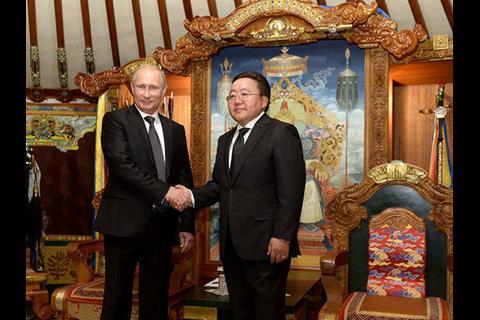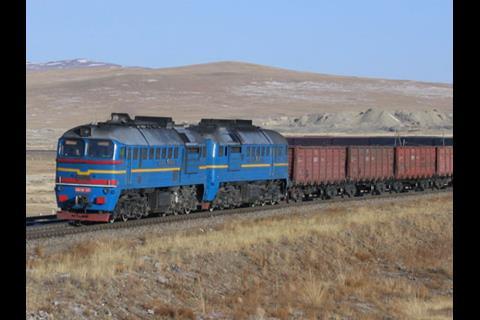MONGOLIA: An agreement outlining a strategic partnership for the development of Ulaanbaatar Railway was signed by the Minister of Roads & Transportation Amarjargal Gansukh and Russian Railways President Vladimir Yakunin on September 3.
By March 1 2015, the ministry and RZD are to agree to terms of reference and appoint consultants to prepare financial and technical feasibility studies for modernisation and construction projects, which would be funded from UBZD’s resources and borrowing. Completion is envisaged by 2020. The main projects under consideration are:
- Modernisation of the 1 100 km north – south route from Sühbaatar on the Russian border to Dzamïn Üüd/Erenhot on the Mongolia/China border, including electrification and/or construction of a second track;
- Construction of the 545 km northern railway west from the Erdenet branch to Ovoot, to support coal mining developments;
- Construction of a 215 km Ovoot – Arz Sur line, which would connect at Kyzyl in Russia’s Tuva Republic with a planned 411 km line to Kuragino and thus the Trans-Siberian corridor;
- Studying the possibility of increasing use of the 239 km Choybalsan – Ereentsav line in the northeast;
- In the west, RZD says a railway line is planned ‘linking Russia and China through Mongolia to export from Russia to China, India, Pakistan, and other countries in the region’.
The agreement was signed in the presence of President Elbegdorj and President Putin of Russia, who said ‘developing the railway network will help Mongolia to open up rich but for now hard to access deposits and make broader and more effective use of its potential as a transit country.’
UBZD was established in 1949, equally owned by the Mongolian and Soviet (subsequently Russian) governments. RZD is now responsible for the Russian state’s stake in the 1 815 km network, and the aim of the agreement is to develop export and transit freight, particularly from Russia to China, to strengthen UBZD’s role in the Eurasian transport network.
Yakunin ‘emphasised the importance’ of using 1 520 mm gauge for future Mongolian lines, with RZD ‘noting that constructing infrastructure using other standards will lead to the unnecessary duplication of services and an increase in operating costs.’



















